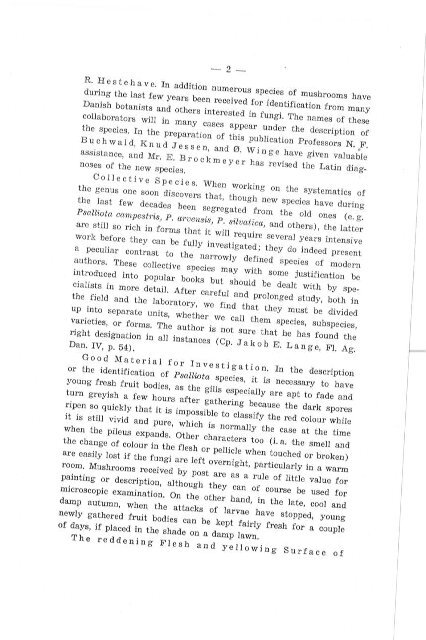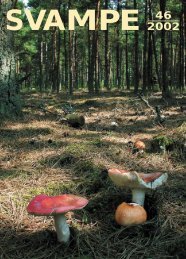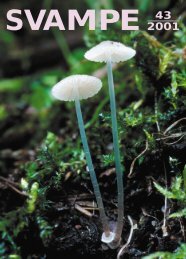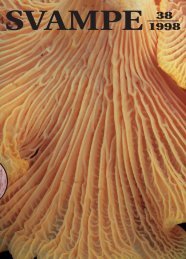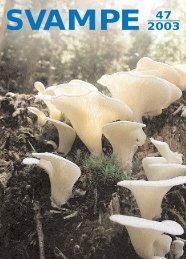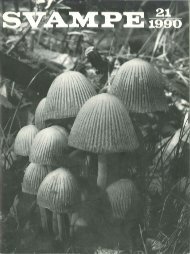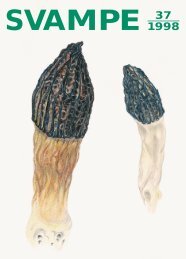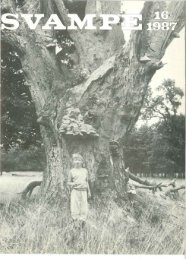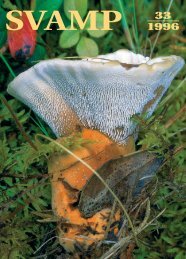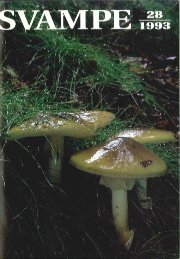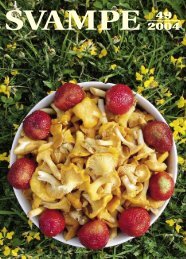You also want an ePaper? Increase the reach of your titles
YUMPU automatically turns print PDFs into web optimized ePapers that Google loves.
-2-<br />
R. H e s t e h a v e. In addition numerous species of mushrooms have<br />
during the last few years been received for identification from many<br />
Danish botanists and others interested in fungi. The names of these<br />
collaborators will in many cases appear under the description of<br />
t he species. In the preparation of thi s publication Professors N. ' .<br />
Bu chwal d, K n u d J essen, and ø. Wi n ge have given valuable<br />
assistance, and Mr. E . B r o c k m e y e r has revise d t he Latin diagnoses<br />
of the new species.<br />
C o Il e c t i v eS p e c i e s. When working on the sys tematics of<br />
t he genus one soon discovers that, though new species have during<br />
t he last fe w decades bee n segregated from the old ones (e. g.<br />
Psalliota cæmpestris, P. aroensis, P. siloaiica, and others) , the latter<br />
are still so rich in forms t hat it will re quire several years intensive<br />
work before they can be fully investigat ed; they do indeed present<br />
a peculiar contrast t o the narrowly defined species of moder n<br />
authors. These collective species may with some justification be<br />
introduced into popular books but should be dealt with by spe<br />
cialists in more detail. After careful and prolonged study, both in<br />
the field and the laboratory, we find that they must be divided<br />
up into separate units, whether we call them species, subspecies,<br />
varieties, or forms. The author is not sure that he has found the<br />
right designation in all instances (Cp. J a k o b E. L a n g e, Fl. Ag.<br />
Dan. <strong>IV</strong>, p. 54).<br />
G o o d M a t e r i a l f o r I n ves t i g a t i o n. In the description<br />
or the identification of Psalliota species, it is necessary to have<br />
young fresh fruit bodies, as the gills especially are apt to fade and<br />
turn greyish a few hours after gathering because the dark spores<br />
ripen so quickly that it is impossible to classify the red colour while<br />
it is still vivid and pure, which is normally the case at the time<br />
when the pileus expands. Other characters too (i. a. the smell and<br />
the change of colour in the flesh or pellicle when touched or broken)<br />
are easily lost if the fungi are left overnight, particularly in a warm<br />
room. Mushrooms received by post are as a rule of little value for<br />
painting or description, although they can of course be used for<br />
microscopic examination. On the other hand, in the late, cool and<br />
damp autumn, when the attacks of larvae have stopped, young<br />
newly gathered fruit bodies can be kept fairly fresh for a couple<br />
of days, if placed in the shade on a damp lawn.<br />
The reddening Flesh and yellowing Surface of


